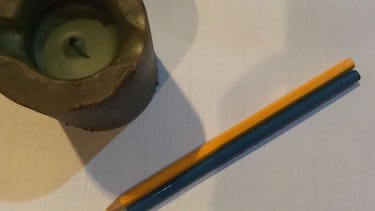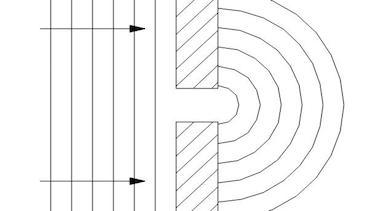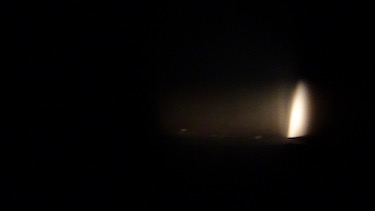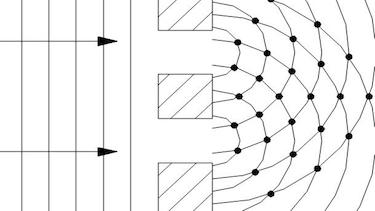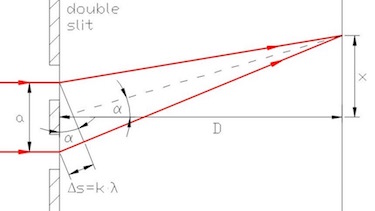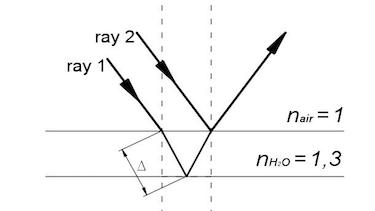
Interference and Diffraction
Question 1 circular waves
Two circular waves with a distance of 4 cm have a wavelength of 0.5 cm.
- Draw the wavefronts of the two waves in order two obtain the interference pattern.
- Describe what happens if two wavefronts meet and in between.
- Describe what happens if a trough from the one wave meets a crest from the other wave.
- Imagine this two waves would be soundwaves and you would walk along a straight line through the interference pattern. Describe what you would har.
- Determine the optical path difference Δs which is necessary for destructive interference.
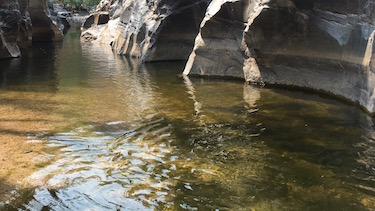
Experiment 1 Double slit experiment
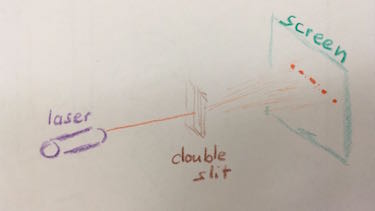
You will need a double slit, laser light and a screen.
- Take a photo of your setup.
- Note the slit width and the wavelenght of the laser. Measure the distance between slit and screen.
- Measure the distance between the first and second and third maximum.
- Check the formula: $$\lambda = \frac{a\cdot x}{k\cdot D},~ \text{with}~ k\in \mathbb{N}$$
Question 2 double slit interference
A red laser with a wavelength of 630 nm and a green laser with 530 nm is used.The slit width ist 500 nm, the two slits are sperated 2 mm and the distance between slit and screen is 70 cm
- Calculate the position $x$ of the maxima on the screen for the red light.
- Calculate the position $x$ of the maxima on the screen for the green light.
- Draw the interference pattern on the screen for 3 orders of maxima.
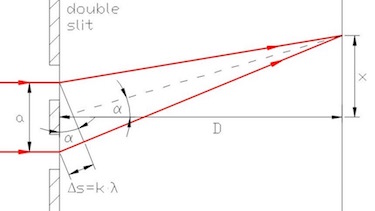
Question 3 Refraction with the wave model
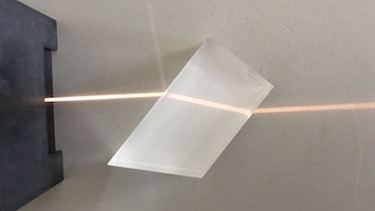
A wave with the wavelength of 500 nm is hitting the surface at an angel of 45 °. As medium we use air and glas with a refractive index of 1.45.
- Describe the defraction in the wave model.
- Draw the wavefront of the incident wave.
- Construct the wavefront of the refracted wave.
- Measure the refracted angle $\delta_2$.
Question 4 Interference on thin layers
The soapbubbles do have faboulos colors.
- Name the color which is created if blue, green or red light is wiped out.
- Calculate the optical path difference which is nescessary to wipe out these colors.
- Calculate the thickness of the soapbubble.
- Argue why do the colors of a soapbubble always change and why does the soapbubble burst after a certain time.
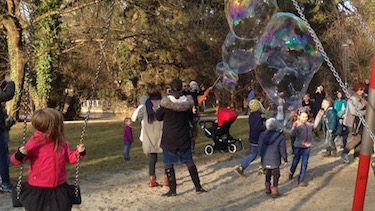
Terms and phrases
| diffraction | the spreading of waves into the area of the geometrical shadow |
| interference | superimposed waves which are amplified or wiped out |
| constructive and destructive interference | Constructive interference occurs if two wavefronts do not have any optical path difference. Destructive interference occurs if the optical path difference is half the wavelength. |
| single slit interference | The diffraction at a single slit causes interference. |
| double slit interference | Interference due to different wavefronts form two slits. |
| interference on thin layers | on thin layers the optical path difference is so small that interference occurs. |
© mylime.info
